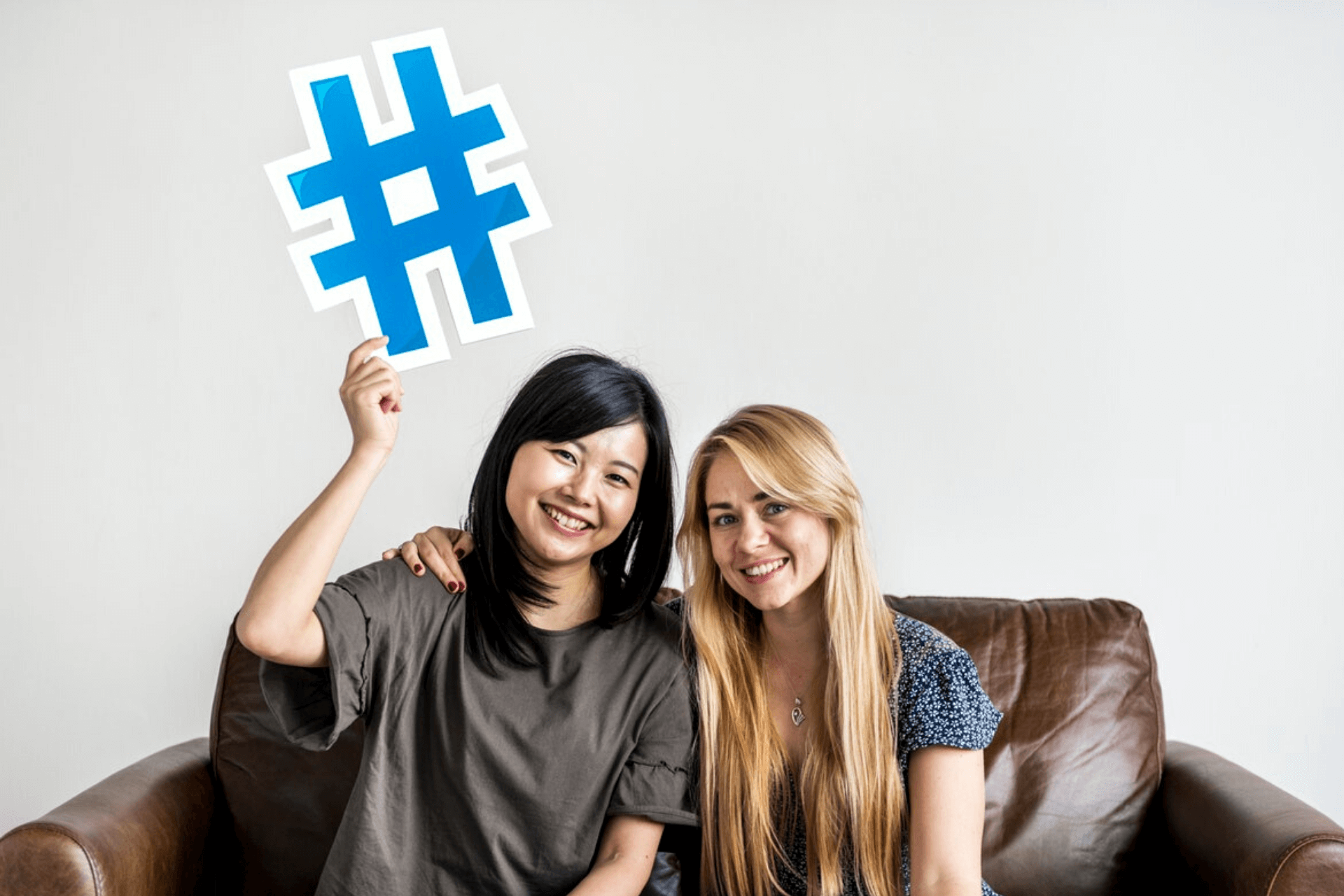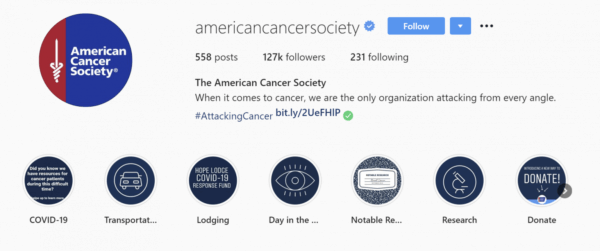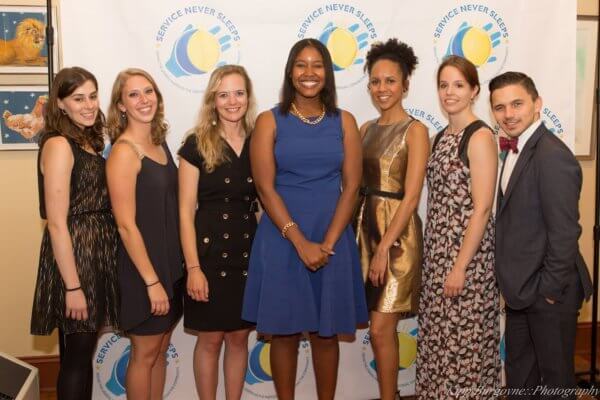
Eighty-six percent of millennials consider user-generated content as a good gauge of a brand’s overall quality. User-generated content comes from unpaid fans of an organization who share their experiences with that brand through their social media platforms, and can include a variety of content, like videos, photos, tweets, blogs, and reviews.
This type of content also serves an organic way for supporters to promote your nonprofit to one another. It’s key to increasing your message’s reach, as 92% of consumers say they trust recommendations from other consumers, even those they don’t know, more than content directly from a brand.
However, you can’t sit back and passively expect that a stream of user-generated content will come from nothing. Below are active methods that can drive user-generated content for your nonprofit.
1. Understand What Your Supporters Are Already Sharing
One of the benefits of user-generated content is that it shows how your supporters are organically marketing on your behalf. It lends a certain authenticity to your nonprofit’s brand, which is crucial when building trust with your audience and encouraging someone to donate.
In fact, 63% of consumers reported that they’d buy from a company they considered to be authentic over its competitors. This same line of research holds true for your organization, and it underscores the importance of user-generated content feeling organic versus forced.
Incorporating your message into your supporters’ existing content preferences will look more authentic than asking them to spread a pre-written marketing message on social media platforms they rarely use. First, however, you must discover where they’re already sharing content and what they’re sharing. Below are a few ways you can gain this information:
Ask Them
This tip may seem simple, but it’s surprisingly overlooked. A sure way to know how your audience interacts with social media platforms is to ask them.
For example, you can select a segment of your recurring donors to call for brief informational interviews. You can ask questions like:
- What social media sites do you check most often?
- Are these the same as the ones you post content to most often?
- What are your preferred types of content to view and post? Blogs? Videos? Photos? Something else?
- Are there any particular people or organizations you enjoy following whom you think are doing a great job with the platform?
- Where do you find information on what’s happening in your community?
- Are there any barriers that keep you from engaging with an organization online?
- What do you think we could be doing better to elevate our nonprofit’s online content, and would you be willing to help us do so?
You can also use a free tool like SurveyMonkey or Google Forms to create a survey with these questions and send it through your existing marketing channels, like an email newsletter.
Additionally, this ask serves as a strong stewardship opportunity and donor touchpoint, as supporters are likely to be happy you want to hear their voice. Human psychology shows that people view those who ask them for advice as being smarter, and that doing so creates a positive connection between the two parties.
Find Similar Organizations
If your nonprofit is new to the world of user-generated content, find other nonprofits who are more established in this field and review their online presence for ideas. For example, if you’re a small local food bank, you may want to look at Feeding America to see:
- Which of their social media channels has the most engagement
- What type of content users post to their #EndHunger hashtag
- Which of their platforms have the most followers
Remember that these could be great places to get ideas, but your audience will be unique in its own makeup. So be sure to track your own engagement as you go.
Use Available Data
Facebook Ads Manager, Google Analytics, and built-in analytics tools on social media platforms all provide demographic and behavioral data on your current social media and website audiences. This is important because different age, gender, and geographic groups tend to use specific social media platforms in their own way.
Using available data, you can see who makes up the bulk of your current audience and emphasize user-generated content on the platforms with which they’re more likely to engage. You can also use this to build a strategy that helps get you in front of new audiences and demographics.
2. Provide a Unifying, Accessible Message
Ninety-four percent of social media users said they share content to help improve the lives of others, and 84% said they share content as a way to support causes they care about. By providing a unifying message that promotes a common good, you can draw your supporters in through a sense of community.
Framing Your Message
The more positive your message is, the more potential it has to be shared. So, think of how to frame your effort in a way that highlights the positive impact of your nonprofit’s work rather than just the problem your nonprofit is trying to solve.
For example, To Write Love On Her Arms is a nonprofit working within the emotionally heavy space of depression, addiction, self-injury, and suicide. They frame their messages through the hope and services they offer rather than the great losses that make their work so needed.
This results in a high level of user engagement. That framing encourages supporters to spread the positive emotion from their posts, allowing their mission to reach more people wanting to help.
https://www.instagram.com/p/CA5SHZHlzEi/?utm_source=ig_embed
Marketing Your Message
If you want to track user-generated content, and encourage engagement from your supporters, create a hashtag. If your followers see that you have a designated hashtag, they’ll be more likely to use it and recognize that you’re looking for them to share related content.
Make your hashtag a visible call to action on your website, social media landing pages, mailers, and office flyers. In the example below, the American Cancer Society puts their hashtag #AttackingCancer in their Instagram bio.

A search for the hashtag delivers a wide range of user-generated content from supporters and patients, many of which, like the example below, also specifically tag the American Cancer Society in their posts.
https://www.instagram.com/p/B07XUNJHRco/?utm_source=ig_embed
3. Incentivize Your Supporters
People are three times more likely to make a purchase when it comes with a free gift, and they’re two-thirds more likely to share that shopping experience with others. Increase your user-generated content by adding small incentives to your efforts.
For example, you might:
- Encourage followers to post a video in which they share why your mission matters to them and select one at random to receive branded swag from your nonprofit
- Create a content-generating BINGO card where followers have to share an Instagram photo, tweet, Facebook status, and other social media updates in support of your nonprofit; the first to get a BINGO gets a free ticket to your fundraising gala
- Partner with a local business to offer a gift card to a random follower who tags a friend in your latest social media post
Below is an example of how TERI Campus of Life, a nonprofit supporting children and adults with special needs, partnered with a restaurant to offer a gift card giveaway in exchange for users sharing their message with friends.
https://www.instagram.com/p/B_7hy3TjSCV/?utm_source=ig_embed
4. Tap Into Event Attendees
Seventy-three percent of event attendees say they plan to share a social media post when attending an event, and 49% say they plan to share a video from the event. Whether you’re hosting a virtual or in-person event, there are steps your nonprofit can take to encourage user-generated content from the occasion.
Establish an Event-Specific Hashtag
In addition to the general hashtag you create for your organization, you should create an event-specific option for your attendees. This way, you can easily find user-generated content for your nonprofit as it pops up during your event.
You can repost user-generated content to your other social media channels in real time, or you can bookmark it for later use and distribution across other marketing channels like your blog, email, or website. Make sure you display this hashtag on event programs, signup forms, and other pre-event marketing materials to increase awareness of it and drive engagement.
For example, charity: water uses the hashtag #CWCharityBall for its large annual event, collecting a variety of attendee photos and videos.
Create Photo-Worthy Stations and Experiences
When the time is right for in-person events to make a comeback, make sure you create opportunities for attendees to take pictures at the venue. Think fun backdrops, bright colors, decorations, dress-up props, and captivating lighting. You may even want to create a “red carpet” station where attendees can get their photos taken in front of a branded curtain.
In this example, social justice and allyship nonprofit Service Never Sleeps created a branded photo station for attendees at their annual event:
Remind Attendees to Share Their Moments
Asking your supporters to share their experiences is a key component to driving user-generated content for your nonprofit. Have your event’s MC make a few announcements throughout the night to remind attendees to share their photos and videos from the event using your unique event hashtag.
5. Interact With Supporters’ Posts
Reciprocation is an unconscious social rule that drives human behavior. When someone gives to us, we feel compelled to reciprocate and return the favor.
Interacting with user-generated content is no different. It encourages supporters to reciprocate the interaction by continuing to produce content about your work and engage with your nonprofit’s posts. There are three key elements to incorporate into your engagement plan:
Proactive Engagement
Since you’ll be able to easily search for recent engagement through your nonprofit’s unique hashtag, make sure to check that hashtag regularly to interact with and re-share user-generated content. Doing so will remind your supporters that their efforts do not go unnoticed, and they’ll be more inclined to continue using your hashtag.
You can also search related hashtags and interact with those posts as a way to encourage new followers. For example, if you are an animal shelter, in addition to searching your organization’s hashtag, you can look at posts tagged with #adoptdontshop, #fureverhome, #rescuepet, or #adoptadog.
Reactive Engagement
In addition to searching for user-generated content to interact with, you’ll receive notifications if users tag you in posts or comment on your posts. Make time to respond to these comments, and like the photos and other content supporters tag you in. This will show your supporters that you’re listening to them and want to engage.
Consistent Scheduling
There should be a regular cadence to your engagement with supporters. If you only respond to comments or re-share user-generated content sporadically every few months, supporters will lose momentum and encouragement to continue sharing.
Set up a consistent schedule to know when you will perform proactive and reactive engagement. Make sure your schedule includes check-ins that are frequent enough that supporters will receive timely responses to their comments and content.
This blog post by Korrin Bishop was published on Classy. Read the original here.


